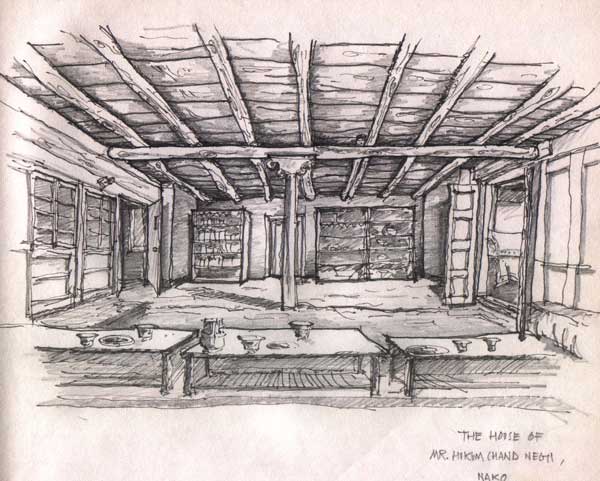
At least 7 temples from different periods spread over the village attest to the fact, that the village of Nako once was an important pilgrimage site. One of them goes back as far as Guru Rinpoche (Padmasambhava), the legendary 8th century founder of Buddhism in this region. (Klimburg-Salter 2003). Well preserved mani walls meandering through the village, mChod rten (chörten) and vernacular architecture with richly carved timber verandas characterize the overall appearance of Nako. These historical dwellings are similarly constructed to those of neighbouring mountainous regions e.g in the valleys of the Hindu Kush and Karakoram: Rubble stone laid in mud mortar, reinforced with vertical and horizontal timber members which support a timber roof (P. Oliver, 1997).
The local housing tradition and religious monuments are merged into an historic ensemble. Thus it is necessary to study, document and preserve the village as a ritual whole. The involvement of the local community in the conservation process is therefore a major aim of the NPP in order to understand both the ritual and social functions of the architecture on the village level. Combining art historical and cultural anthropological methods we hope to identify and analyze the ongoig mechanisms of change in Nako Village.

The Nako houses are ideal considering the prevailing weather conditions and one gets a very warm feeling inside. A few of the villagers also let out rooms for visitors, who prefer to stay here with the families, eat their local food and want to know more about their way of life.
During our stay a couple of villagers wanted to build guesthouses the traditional way and under our guidance. Still, a few villagers seem to think that visitors would rather stay in modern concrete hotels. That is not true as we learnt after having met a lot of foreigners. By the end of our two month's stay in Nako there were already three or four new concrete buildings coming up right at the entrance to the village. We feel there is an urgent need to stop more concrete structures from being erected as the village is gradually losing its character and beauty.